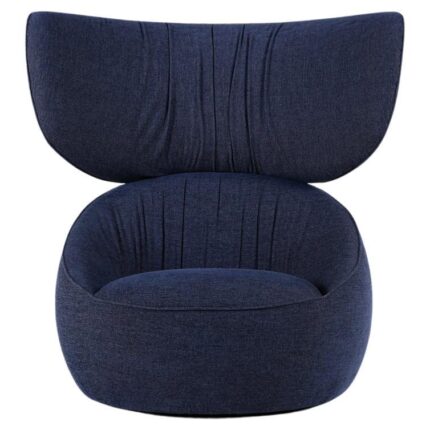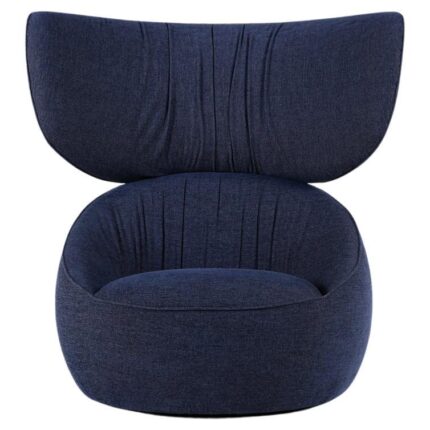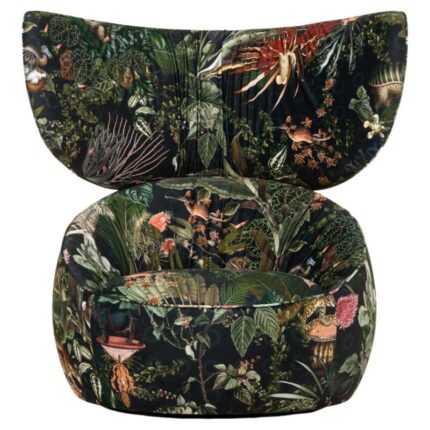Vintage Design
A stunning antique French Vernis Marten five panel display cabinet in the Louis XV manner and of extravagantly shaped serpentine form, Circa 1880 in date, with exquisite hand painted decoration and exquisite ormolu mounts. There are five Vernis Martin panels with beautiful hand painted decoration, the central panel depicting a courting couple and the others with pastoral country scenes. With a central clear serpentine glazed door flanked by clear glazed bow panels with glazed serpentine panels on the sides with a capacious cupboard in the bottom. It is smothered in gorgeous gilded ormolu mounts, standing on cabriole legs, the patterned silk lined interior is fitted with glass shelves to display your collection of china or silver beautifully. This magnificent piece is in excellent condition and the quality and attention to detail throughout is second to none. Add a touch of unparalleled style to your home. Condition: In excellent condition having been beautifully cleaned polished and waxed in our workshops, please see photos for confirmation. Dimensions in cm: Height 205 x Width 117 x Depth 38 Dimensions in inches: Height 6 foot, 9 inches x Width 3 foot, 10 inches x Depth 1 foot, 3 inches Vernis Martin is a lustrous lacquer substitute widely used in the 18th century to decorate furniture and such personal articles as brisé fans, snuffboxes and clocks. The process of adding bronze or gold powder to green varnish was perfected by the French brothers Guillaume and Etienne-Simon Martin, hence its name “Vernis Martin”, as Vernis is French for varnish. It is said to have been made by heating oil, copal and amber and then adding Venetian turpentine and the Martin brothers perfected the process with inclusions in the varnish, sprinkling spangles of silver plated copper wire into the wet varnish ground. Highly praised by Voltaire, it was developed to imitate East Asian lacquerware which was being imported into France during the Louis XV period. Vernis Martin was made in several colours, green, black and a golden red being the most characteristic. Ormolu – (from French ‘or moulu’, signifying ground or pounded gold) is an 18th-century English term for applying finely ground, high-carat gold in a mercury amalgam to an object of bronze.The mercury is driven off in a kiln leaving behind a gold-coloured veneer known as ‘gilt bronze’. The manufacture of true ormolu employs a process known as mercury-gilding or fire-gilding, in which a solution of nitrate of mercury is applied to a piece of copper, brass, or bronze, followed by the application of an amalgam of gold and mercury. The item was then exposed to extreme heat until the mercury burned off and the gold remained, adhered to the metal object. No true ormolu was produced in France after around 1830 because legislation had outlawed the use of mercury. Therefore, other techniques were used instead but nothing surpasses the original mercury-firing ormolu method for sheer beauty and richness of colour. Electroplating is the most common modern technique. Ormolu techniques are essentially the same as those used on silver, to produce silver-gilt (also known as vermeil).
| Production Period | Before 1890 |
|---|---|
| Country of Manufacture | France |
| Style | Antique |
| Detailed Condition | |
| Product Code | SQL-1258085 |
| Restoration and Damage Details |
Cleaned, Polished, Waxed
|
| Materials | Glass, Wood |
| Color | Clear, brown |
| Width |
117 cm 46.1 inch |
| Depth |
38 cm 15.0 inch |
| Height |
205 cm 80.7 inch |
| Duties Notice | Import duty is not included in the prices you see online. You may have to pay import duties upon receipt of your order. |

























































Reviews
There are no reviews yet.